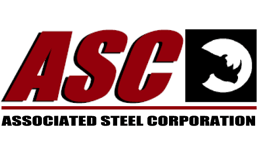Continuing from our last post, we are discussing chromed rods. When they are applied correctly, chromed Rods typically extend service life compared to standard carbon and alloy bars. Variables relative to those materials would be the steel type, actual hardness, and the type of hardness (surface or throughout). The benefits of chromed rods address sliding surface abrasion and corrosion.
In actual service, however, even sliding abrasion applications are not just limited to sliding abrasion. Small bits of debris (tramp elements) find their way onto the exposed rod and then get pulled through the seal (intended to keep tramp elements out), between the rod and the cylinder. The motion of the rod is often interrupted by impact causing shock and twisting or bending of the rod.
Deciding between IHCP and Hard Chrome HP & Too great of a surface finish has a downside.
Since chrome plating is most often applied to a rod surface very thin (thousandths), the importance of a surface hardened sub-straight should not escape consideration. Where severe impact and gouging may be experienced, a hardened sub-straight will resist damage. You would think that, to be on the safe side, everyone should always order the IHCP material. The problem is, surface hardened sub-straights may be furnished at a hardness of 60 to 62RC (approximately 600bhn). Not everyone has machinery sufficient to handle that hardness. Drilling, cutting, machining may be a problem.
The thin chrome “skin” covering the rod is easier to penetrate when the sub-straight is soft. Various fabrication processes are readily accomplished. Smaller shops will find fabrication processes easier.
It is also important to always remember that high hardness in steel (carbon or alloy surface or throughout) also affects ductility. Application consideration must be given to the propensity for fracture.
CHROME SURFACE FAILURE
Abrasive related chrome surface failures often damage seals. When chrome gets very thin due to wear, it cracks and peels, exhibiting a razorblade sharp projection that often curls up, like the bark on a Birch tree. This type of failure is often experienced where there the surface of the shaft is subjected to severe temperature change (furnace). That projection tears up seals. In applications were liquid may escape, such as sludge from a barge pump, the contamination could be catastrophic. Read as “expensive”. In those applications, some alternative (such as utilizing hardened stainless shafts) should be considered.
Our last post of this three-part series will cover, lubrication, bar cut-ends, and dent bars.
-Howard Thomas, May 6th 2021
